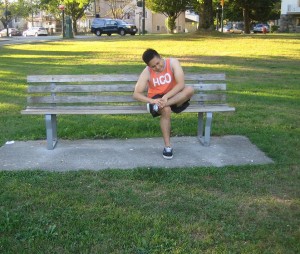An ingrown nail is due to the pressure from the growth of the nail edge into the skin of the toe. When the edge of the nail cuts through the skin, it will result to inflammation. Initially, it will just cause minor discomfort and eventually progress into an infection involving the neighboring skin which is called cellulitis and becomes a recurrent condition. Ingrown toenails usually affect the large or big toes.
Symptoms
- There is swelling in the sides of the affected nail.
- Curling up of the affected nail from the sides and digging into the skin and result to pain, infection and redness.
- The affected nail becomes sore and causes pain when touched especially on the margin of the nail.
- The nail becomes sensitive with slight pressure and punctures the tissues in the toes, thus causing sharp and excruciating pain.
- The folds of the nails become reddish in color and develop pus or a yellow discharge from the infected nails which can be watery with traces of blood.
The affected nail becomes sore and causes pain when touched especially on the margin of the nail. - The infected nail is susceptible to infection unless it is frequently cleaned to prevent it from getting worse.
Causes
- Wearing ill-fitting foot wear and high heels for long periods of time can cause compression of the toes. This compression places irregular pressure on the toenail and grow in abnormal directions.
- Fungal infections in the nail
- Improper trimming such as cutting nails too close to the skin which exposes the nail bed which makes it susceptible to infections.
- Undernourishment and deficiency diseases causes distorted and wrapped nails.
- Injury to the nail plate while playing sports like soccer.
- Injury to the nail plate due to accidents can stub the nail and flesh under it.
Treatment of an ingrown nail
- Take a lukewarm water soak for at least 15-20 minutes. Prepare a solution by mixing one part white vinegar, 4 parts water and 2 tablespoon Epsom salts per quart of water or use diluted Clorox-type bleach with 1/3 teaspoon of Clorox with 1 gallon of water.
- Elevate the foot and leg.
- Take the prescribed oral anti-inflammatory medications.
- Trim the toenail straight across the top and avoid digging into the corners and making them too short.
- Soften the nails before clipping by using oil, antiseptic creams, antifungal creams and moisturizing creams in order to prevent infections.
- Use the prescribed antibiotic creams in the affected area regularly in order to prevent infection and for fast healing of the area.
- Wear sandals that are not too tight to help avoid placing pressure on the affected nail. Wrap the wound lightly if there is a need step out of it.
- Clean the sides of the infected nail that is swelling by dipping it in hydrogen peroxide at least three times every day, then apply over-the-counter ointment such as iodine
- Wash the foot at least 4-5 times every day using mild soap and water.
FACT CHECK
https://en.wikipedia.org/wiki/Ingrown_nail
https://www.emedicinehealth.com/ingrown_toenails/article_em.htm


